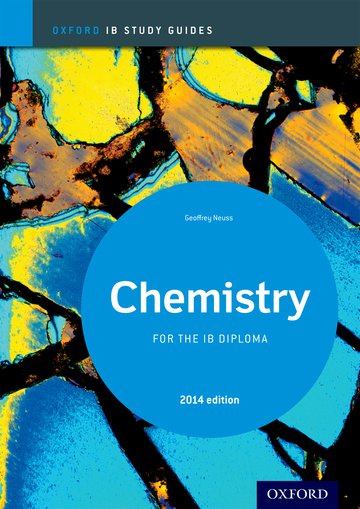Lewis acids & bases
 18.1 Lewis acids and bases (1 hour)
18.1 Lewis acids and bases (1 hour)
Pause for thought
BrØnsted and Lowry independently put forward their acid-base theory based on proton transfer in 1923. In the same year Gilbert Lewis from the United States of America. proposed an even more encompassing theory by extending it to the movement of pairs of electrons. Lewis bases are able to donate a non-bonding pair of electrons to form a coordinate bond with a Lewis acid which is itself deficient in electrons. It is worth emphasising that organic reaction mechanisms, such as nucleophilic substitution SN2 reactions, are in fact Lewis acid-base reactions where 'curly arrows' are used to indicate the movement of pairs of electrons. Lewis acids and bases do not have to involve hydrogen or hydrogen ions and classic Lewis acids include transition metal ions in ligand replacement reactions.
 Although that is the limit of IB definitions there are later even more all-encompassing definitions of acids and bases. One of the better known is that of Mikhail Usanovich (1894 – 1981) (see right) who in 1939 designated an acid as any electropositive or electrophilic substance and a base as any nucleophilic substance, i.e. an acid is anything that accepts negative species (including a single electron) or donates positive species. Usanovich worked in the USSR and his work was only truly recognised in the West much later. The essential difference between the Gilbert Lewis and Mikhail Usanovich theories is that the Lewis definition is concerned with the making and/or breaking of chemical bonds whereas the Usanovich definition is more concerned with the physical movement of electrons and thus strays very much more into the concept of oxidation and reduction. The property of acids reacting with reactive metals such as zinc to produce hydrogen or the reaction of chlorine with sodium to produce sodium chloride is covered by this definition whereas it is not covered by the Arrhenius, BrØnsted-Lowry or Lewis definitions.
Although that is the limit of IB definitions there are later even more all-encompassing definitions of acids and bases. One of the better known is that of Mikhail Usanovich (1894 – 1981) (see right) who in 1939 designated an acid as any electropositive or electrophilic substance and a base as any nucleophilic substance, i.e. an acid is anything that accepts negative species (including a single electron) or donates positive species. Usanovich worked in the USSR and his work was only truly recognised in the West much later. The essential difference between the Gilbert Lewis and Mikhail Usanovich theories is that the Lewis definition is concerned with the making and/or breaking of chemical bonds whereas the Usanovich definition is more concerned with the physical movement of electrons and thus strays very much more into the concept of oxidation and reduction. The property of acids reacting with reactive metals such as zinc to produce hydrogen or the reaction of chlorine with sodium to produce sodium chloride is covered by this definition whereas it is not covered by the Arrhenius, BrØnsted-Lowry or Lewis definitions.
Nature of science
Scientific theories can be supported, falsified or replaced by new theories. By considering lone pairs of electrons Gilbert Lewis extended acid-base theory to a wider field of applications. Lewis theory extends, but does not falsify Brønsted–Lowry theory.
Learning outcomesAfter studying this topic students should be able to: Understand:
Apply their knowledge to:
| Clarification notesExamples from both inorganic and organic chemistry should be studied. The relationship between Lewis theory and the Brønsted–Lowry theory of acids and bases should be discussed. International-mindednessGilbert Lewis, who was from the USA. (and Mikhail Usanovich, who was from the USSR), provide yet further examples of how acid-base theories have developed through collaboration and competition by many scientists from many different countries. |
Teaching tipsAll the examples used to illustrate BrØnsted - Lowry acids and bases can also be used to illustrate Lewis theory as all BrØnsted - Lowry acids and bases are also Lewis acids and bases. But then you should extend it to the classic cases that do not involve protons. Examples include boron trifluoride, BF3 with fluoride ions to form the tetrafluoroborate ion,BF4−, or nitrogen trifluoride, NF3 with BF3. Explain that those compounds which do not have a complete octet around the central atom such as aluminium in AlCl3 or boron in BF3 can act as Lewis acids as they will readily accept a pair of electrons. Similarly compounds or species where the central atom can expand its octet, such as PF5, can also act as Lewis acids. Mention too that transition metal ions also act as Lewis acids when they form complexes with ligands, such as water or ammonia, which are acting as Lewis bases. This topic contains much of relevance to the Nature of Science and after you have taught it you may like to give your students Example 2 from the NoS questions. | Study guide
Page 63 QuestionsFor ten 'quiz' multiple choice questions with the answers explained see MCTest: Lewis acids & bases. For short-answer questions which can be set as an assignment for a test, homework or given for self study together with model answers see Lewis acids & bases questions. Vocabulary listLewis acid & base IM, TOK, Utilization etc.See separate page which covers all of Topics 8 & 18 |
Teaching slides
Teachers may wish to share these slides with students for learning or for reviewing key concepts.
Other resources
1. A short video by Richard Thornley which clearly illustrates the difference between the BrØnsted-Lowry and the Lewis definitions.
BrØnsted-Lowry & Lewis definitions ![]()
2. Another video emphasising how to recognise Lewis acids and Lewis bases by ChemistNATE.
![]() Recognising Lewis acids and bases
Recognising Lewis acids and bases

 IB Docs (2) Team
IB Docs (2) Team 









